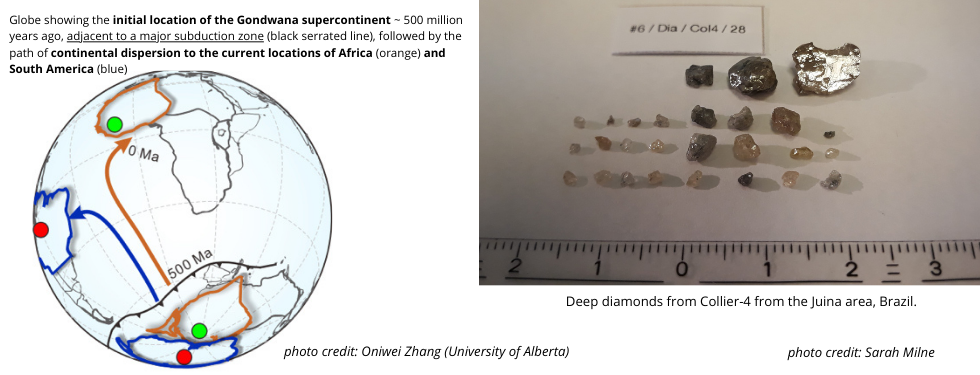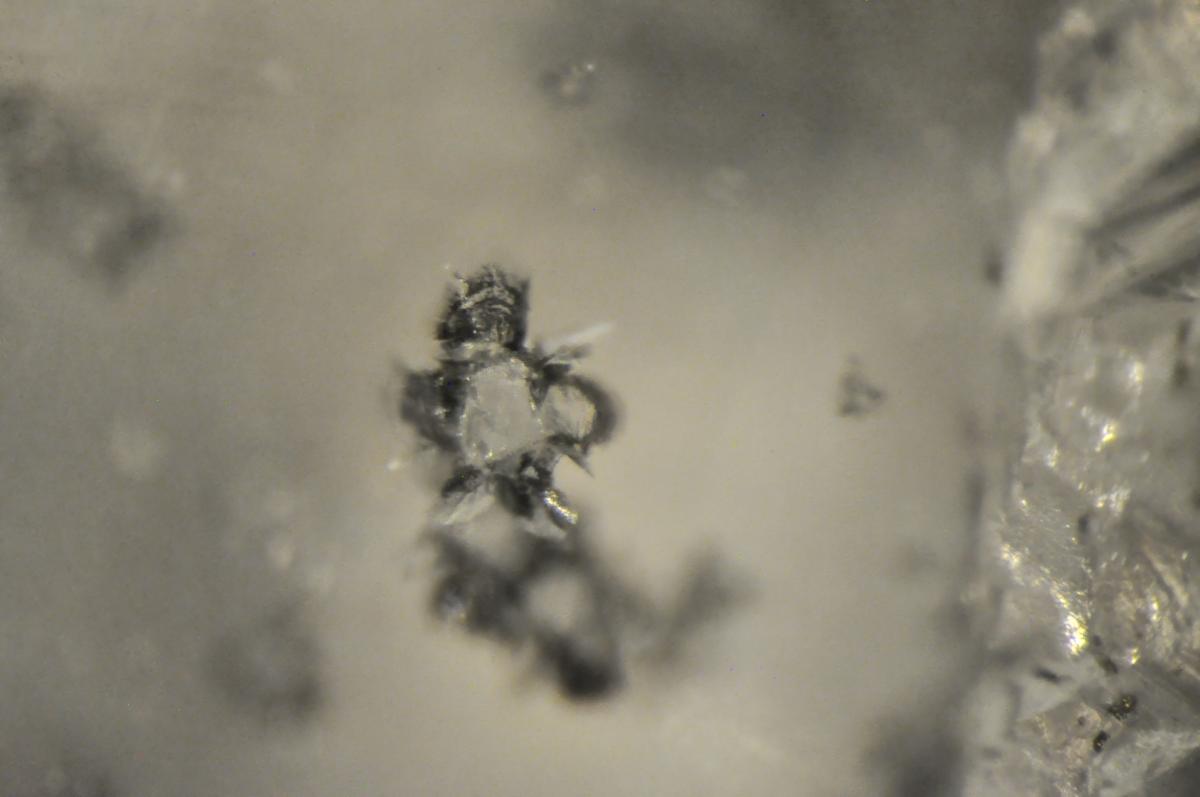Deep diamonds shed light on how supercontinents move

Continents drift across Earth’s surface and at specific times in geologic history they become stitched together as “supercontinents”, such as Rodinia (formed 1.3 billion years ago and broke up 750 million years ago), Gondwana (formed about 600 million years ago and broke up about 290 million years ago), and the supercontinent Pangea (290 million – 180 million years ago). Many other supercontinents formed and disintegrated through a continuous and dynamic cycle, which leads them to unite, separate, move for thousands of kilometers and then assemble again. These "migrations" of the continents are known as the "supercontinent cycle" and the reconfigurations assumed over time have also influenced the biology of our planet.
Although this cyclical process of fragmentation and assembly of the continents is the basis of the entire geological evolution of the Earth, it is still not completely clear how supercontinents moved over time and how fundamental geological processes such as plate tectonics might relate to the supercontinent cycle.
The study “Sublithospheric diamond ages and the supercontinent cycle”, just published in Nature used the analysis of so-called super deep diamonds to give an answer to this mystery. Led by Suzette Timmerman of the University of Bern, the international team of scientists, which also includes Fabrizio Nestola of the Department of Geosciences of the University of Padua, studied the evolution of the supercontinent Gondwana which between 600 and 300 million years ago used to incorporate South America, Arabia, Madagascar, India, Australia and Antarctica.
Diamonds, thanks to their extraordinary resistance, are often not altered by the geological phenomena they encounter such as the catastrophic volcanic eruptions that bring them to the surface and the large horizontal movements of thousands of kilometers of the plates that transport them. They therefore become the ideal key for investigating regions of the Earth's mantle that are otherwise inaccessible.
In particular, the study of the inclusions contained within them, i.e. fragments of minerals which the diamonds trapped during its formation, opens a real window onto the interior of the Earth. In some cases, scientifically fortunate, diamonds can provide us with precious information on the engine of plate tectonics and how this engine is related to the cycle of supercontinents.
The international research group studied super deep diamonds, those that form at depths between 300 and 700 km, to reconstruct the temporal evolution of the supercontinent Gondwana. By cross-referencing the age of diamonds, geochemical analyzes and current models of tectonic plate movement, it has been demonstrated that, approximately 650-450 million years ago, Gondwana was positioned where the South Pole is currently located. The supercontinent, 120 million years ago , began to break up, giving rise to the current Atlantic Ocean. As demonstrated in the research published in «Nature», about 90 million years ago the diamonds used in the study, which were found in Brazil and Africa, were erupted onto the surface. The geographical position of the supercontinent Gondwana approximately 500 million years ago therefore corresponded to the current South Pole, subsequently Gondwana fragmented towards North Africa and South America.
"For the first time we managed to identify some minerals within super deep diamonds never dated before" – explains Fabrizio Nestola, Full Professor of the Department of Geosciences of the University of Padua -. "The subsequent analyzes allowed us not only to understand when these diamonds were formed, but also, and this is fundamental in geology, to trace the path of the fragments of the supercontinent Gondwana, from the current South Pole to Brazil and Africa. The diamonds under study have in fact migrated together with the different parts of the supercontinent, thus allowing the evolution of Gondwana to be revealed in such detail for the first time. Thanks to their incredible mineralogical properties" – concludes Nestola – "these precious gems are able to move horizontally and vertically for thousands of kilometers without ever being destroyed over a very long time of hundreds of millions of years and for this reason they are continuing to reveal to us the history of our Planet.”
TITLE: Sublithospheric diamond ages and the supercontinent cycle
LINK TO THE RESEARCH: https://www.nature.com/articles/s41586-023-06662-9
DOI: 10.1038/s41586-023-06662-9
FIG. 1 Globe showing the initial location of the Gondwana supercontinent ~ 500 million years ago, adjacent to a major subduction zone (black serrated line), followed by the path of continental dispersion to the current locations of Africa (orange) and South America (blue). Drawing by Qiwei Zhang, University of Alberta (Canada).
Ca-silicate inclusion inside a diamond from Kankan (Guinea, Africa) foto: Margo Regier |
Prof. Fabrizio Nestola |







